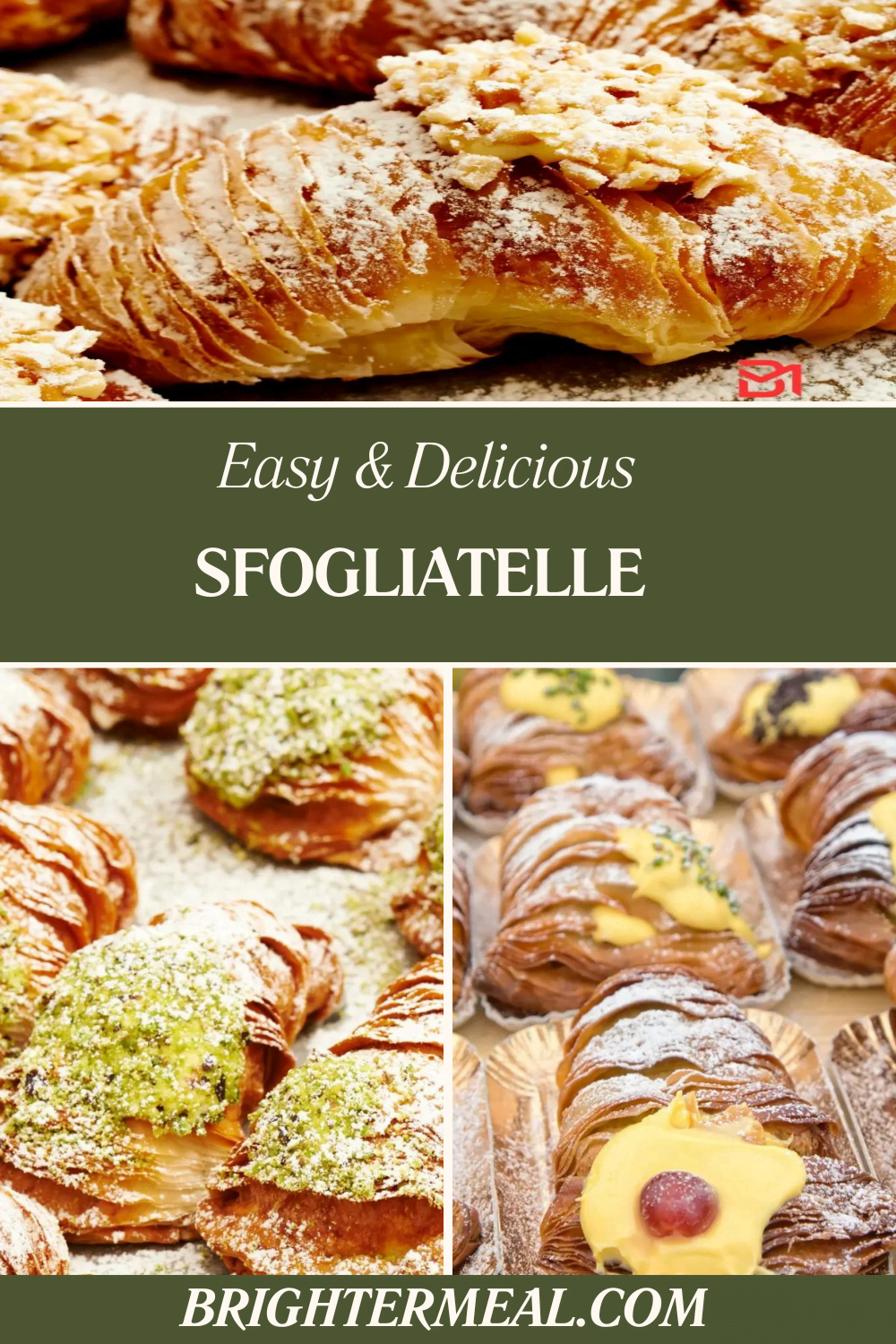In the realm of Italian pastries, few delights can rival the exquisite layers of a sfogliatella. Additionally, originating from the Campania region of Italy, this iconic pastry has captivated taste buds around the world with its flaky crust and rich, creamy filling. Let’s delve into the intricacies of sfogliatelle; accordingly, from its origins to its modern-day popularity.
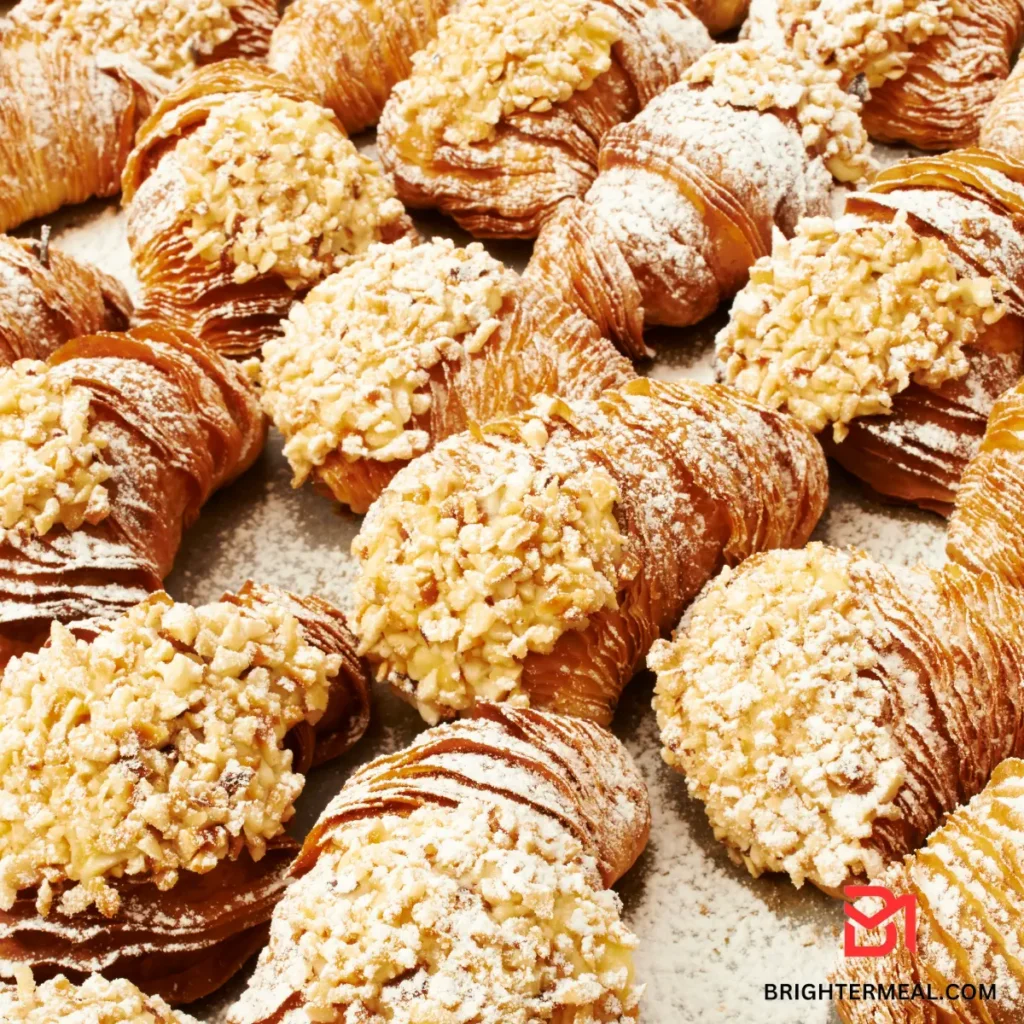
What is Sfogliatelle?
Sfogliatelle, pronounced as “sfo-lee-ah-TEL-lay,” represents a traditional Italian pastry renowned for its distinctive shell-like shape and multi-layered dough. Additionally, the term “sfogliatelle” originates from the Italian word “sfoglia,” signifying “thin layer” or “sheet,” perfectly capturing the pastry’s delicate, flaky texture.
Historical Background
Origins of Sfogliatelle
The history of this recipe traces back to the 17th century in Naples, Italy. Indeed, many believe that nuns in local convents first created the pastry as a special treat for festive occasions and religious celebrations. Over time, however, the recipe spread beyond the convent walls, becoming a beloved delicacy enjoyed by people across Italy and beyond.
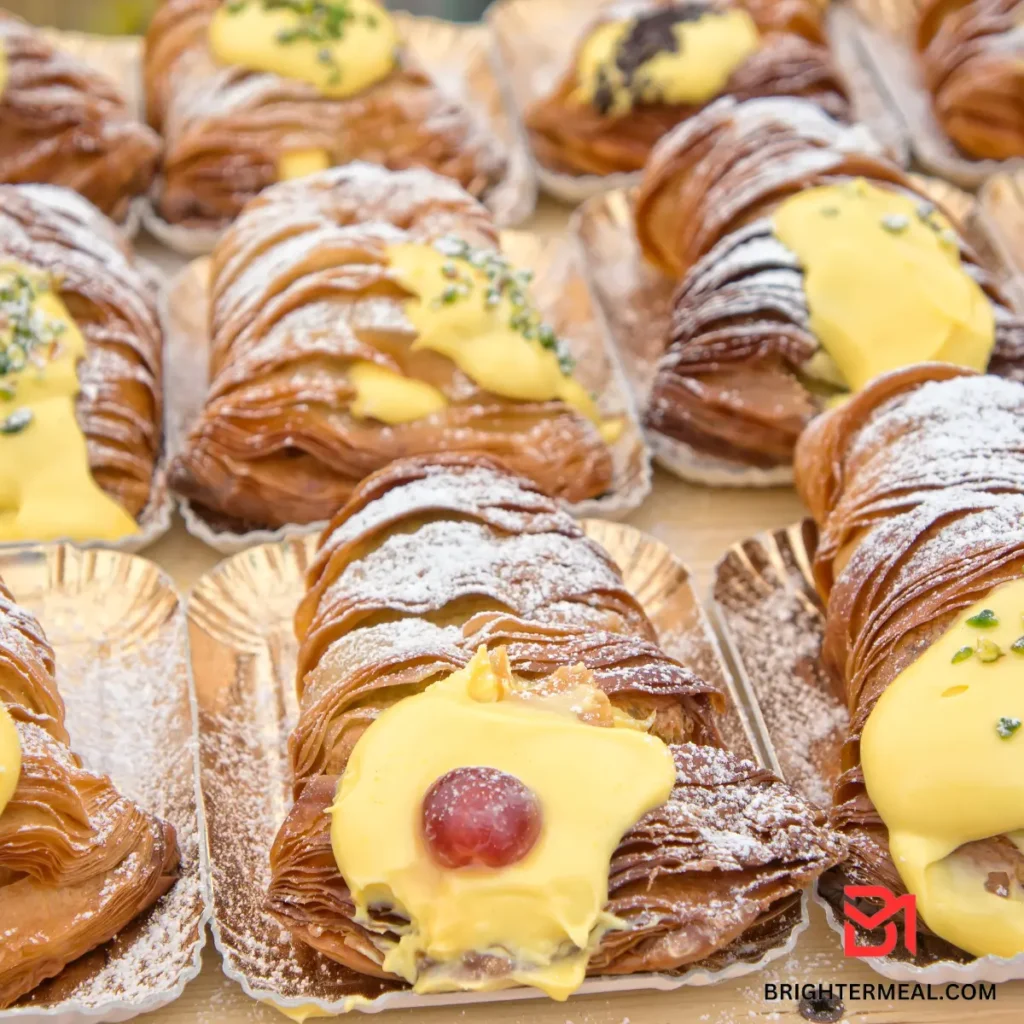
Types and Varieties
Traditional Sfogliatelle Ricce
The most iconic variety of this recipe is known as “sfogliatella riccia” or “curly sfogliatella.” This type features thin layers of dough rolled into a cylindrical shape, resembling a seashell when baked. The filling typically consists of a luscious mixture of ricotta cheese, sugar, citrus zest, and sometimes candied fruits or chocolate chips.
Sfogliatella Frolla
Another popular variation is the “sfogliatella frolla” or “shortcrust sfogliatella.” Unlike its curly counterpart, sfogliatella frolla has a smoother, more uniform appearance, featuring a flaky shortcrust pastry shell. The filling may vary slightly, often incorporating almond paste or pastry cream for a decadent twist.

Cultural Significance
Symbolism in Sfogliatelle
Beyond its culinary appeal, this recipe carries cultural significance in Italian society. Its distinctive shape resembles various symbols, including seashells, emblematic of Naples’ coastal heritage. Additionally, many view preparing this recipe as a labor of love, symbolizing traditions and craftsmanship passed down through generations.
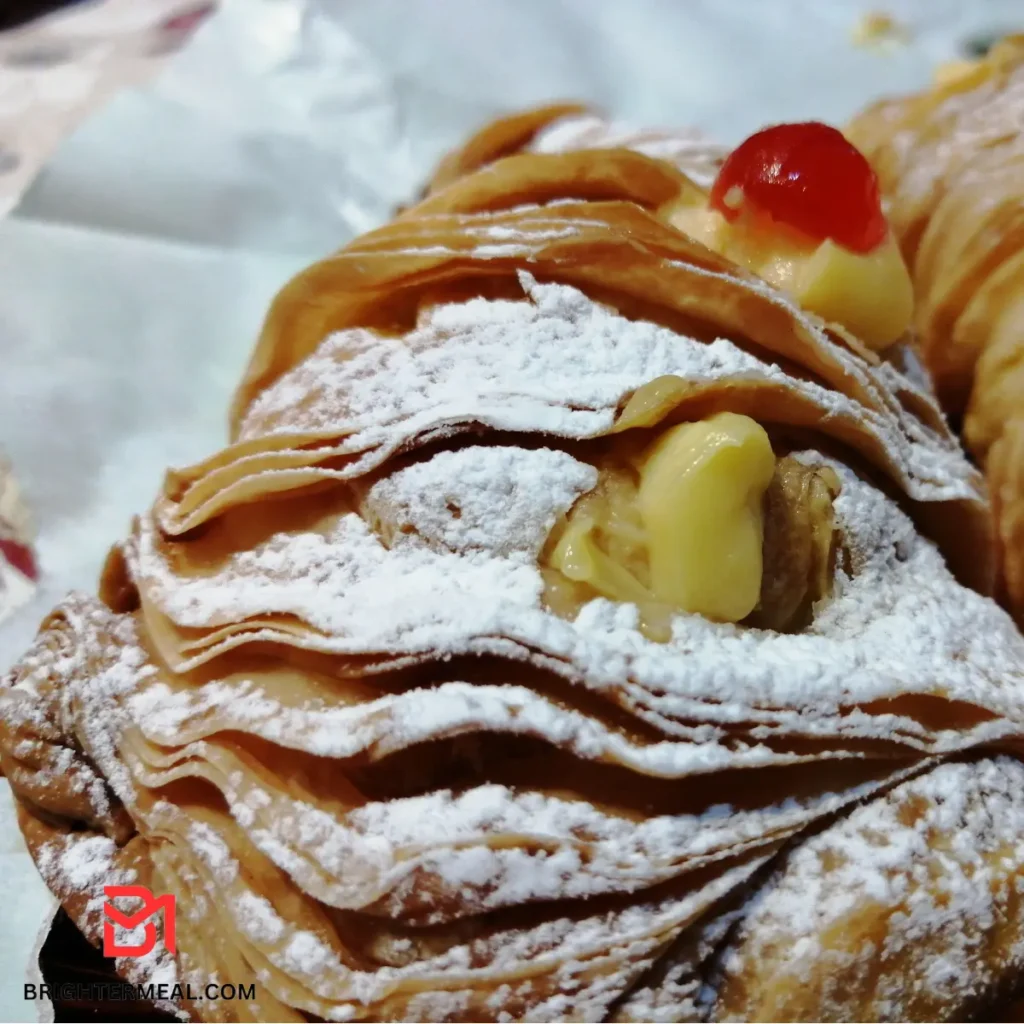
Recipe and Preparation
Making Sfogliatelle Dough
The preparation of sfogliatelle dough involves a labor-intensive process, demanding skill and patience. Additionally, achieving its signature flakiness requires creating thin layers of dough, meticulously rolling and folding them to achieve a laminated effect. This process, known as “sfogliatura,” is repeated multiple times to attain the desired texture.
Ingredients:
- All-purpose flour
- Water
- Salt
- Butter or lard
- Sugar
Instructions:
- Begin by preparing a basic dough using flour, water, and salt, similar to a pasta dough.
- Roll out the dough into a thin sheet, then spread a layer of fat (butter or lard) over the surface.
- Fold the dough into multiple layers, then roll it out again to create more layers.
- Repeat the folding and rolling process several times. Afterwards, allow the dough to rest between each iteration.
- Once the dough has been properly laminated, it can be shaped and filled according to the desired recipe.
Filling and Baking
After preparing the dough, it’s time to fill and bake the recipe to perfection.
Filling:
- Ricotta cheese
- Sugar
- Citrus zest
- Candied fruits or chocolate chips (optional)
Baking:
- Preheat the oven to the specified temperature, typically around 375°F (190°C).
- Fill each piece of dough with the ricotta filling, then shape it into the desired form (curly or frolla).
- Arrange the sfogliatelle on a baking sheet lined with parchment paper. Additionally, leave space between each pastry.
- Bake in the preheated oven for approximately 25-30 minutes, or until golden brown and crisp.
- Allow the recipe to cool slightly before serving, as the filling may be hot.
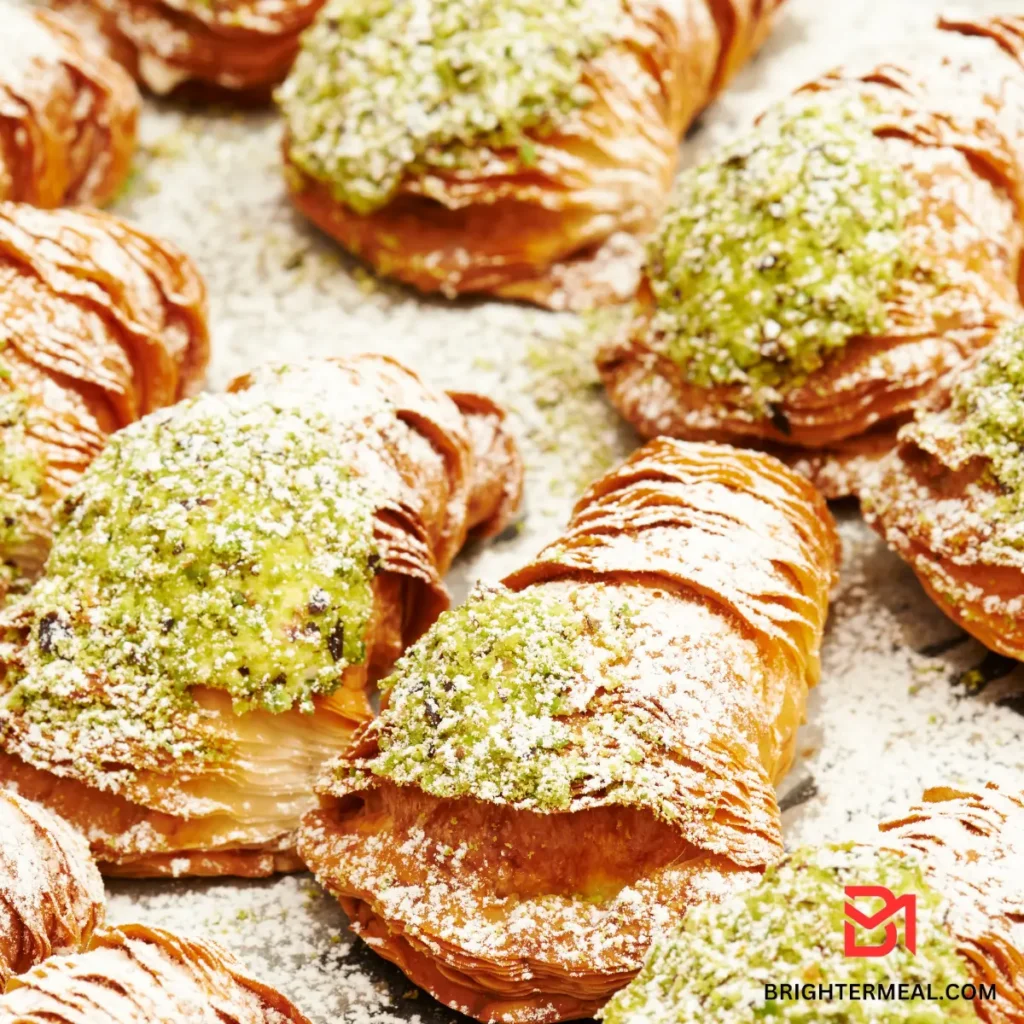
Nutritional Information
Despite their indulgent reputation, sfogliatelle can be enjoyed in moderation as part of a balanced diet. Here’s a brief overview of the nutritional content of a typical sfogliatella serving:
- Calories: 250-300 kcal
- Fat: 15-20 g
- Carbohydrates: 20-25 g
- Protein: 5-8 g
Health Benefits and Considerations
Moderation is Key
While sfogliatelle can be a delightful treat, it’s essential to enjoy them in moderation due to their high fat and calorie content. Pairing this recipe with fresh fruit or a light salad can help balance out the meal and provide additional nutrients.
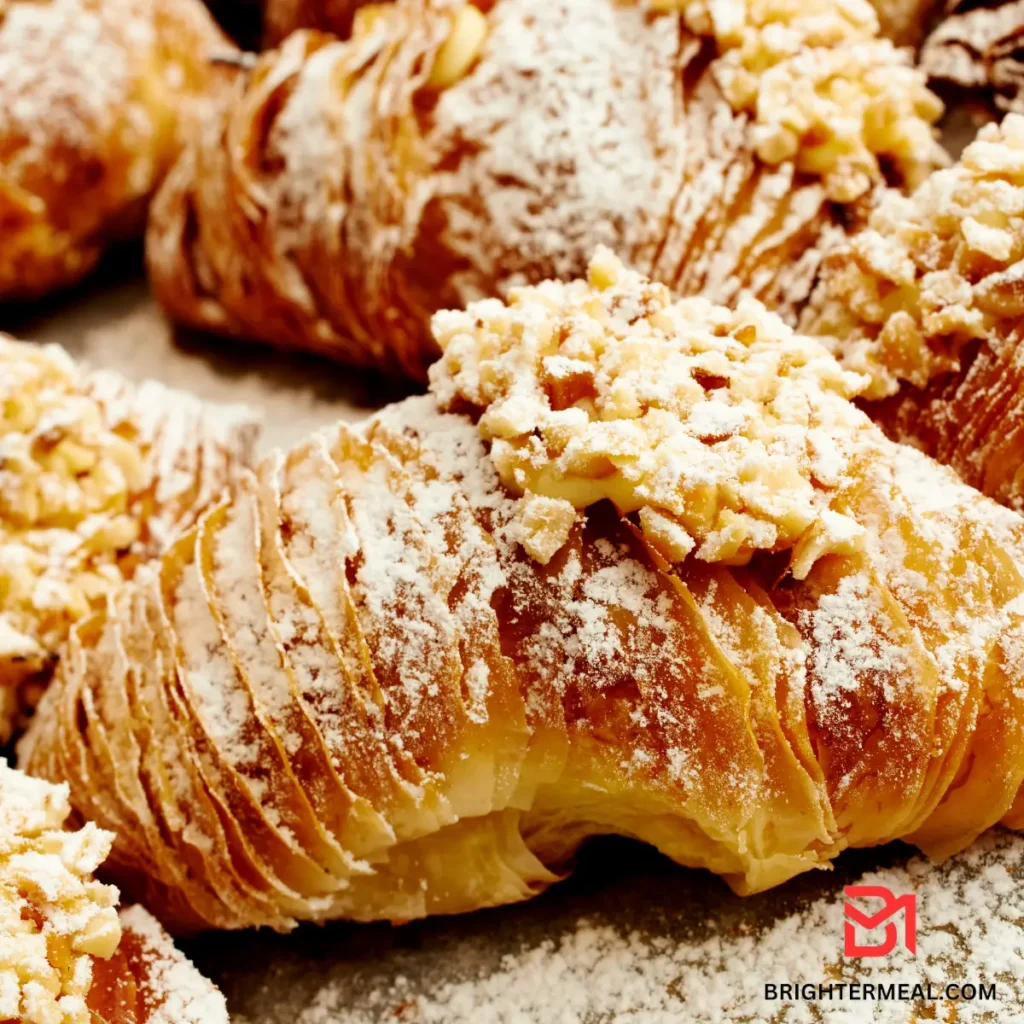
Conclusion
In conclusion, sfogliatelle represents not only a culinary masterpiece but also a testament to the rich cultural heritage of Italy. From its humble origins in Neapolitan convents to its widespread popularity today, this delectable pastry continues to enchant food lovers around the globe. Whether enjoyed as a breakfast indulgence or a sweet afternoon snack, sfogliatelle never fails to delight the senses with its delicate layers and creamy filling.
Faqs About sfogliatelle
Sfogliatelle is an Italian pastry whose name comes from the Italian word “sfoglia,” meaning “thin layer” or “sheet.” Basically, this refers to its delicate, layered dough.
Yes, sfogliatelle are typically suitable for vegetarians. Indeed, the main ingredients in the filling are ricotta cheese and sugar, both of which are vegetarian-friendly.
The two main types of sfogliatelle are “sfogliatella riccia” (curly sfogliatelle) and “sfogliatella frolla” (shortcrust sfogliatelle). Additionally, each has its own distinctive characteristics and fillings.
Yes, sfogliatelle can be frozen for later consumption. Once baked, allow them to cool completely, then place them in an airtight container or freezer bag. When ready to enjoy, simply thaw them at room temperature or reheat in the oven for a few minutes.
If you love pastry, check out these recipes!
Mastering the Art of Easy Savory Pastries: A Gourmet Delight
Mother’s Crispy Rolled Pastry Recipe
Puff Fluffy Flower Pastry Recipe
So, If you enjoy, please Follow my facebook page to be notified every time I publish a recipe!Enregistrer
Love this recipe? Give it a ⭐⭐⭐⭐⭐ review in the recipe card below!

Authentic Italian Sfogliatelle Recipe
Ingredients
For the puff pastry:
- 200 g flour
- 1 pinch of salt
- 100 ml water
- 100 g butter
For the semolina:
- 250 ml milk
- 75 g fine semolina
- 40 g sugar
For the filling:
- 250 g Casa Azzurra ricotta
- 100 g sugar
- 1 egg yolk
- Zest of 1 orange or orange blossom water
- 40 g candied fruits optional
- 1 egg yolk for brushing
- Icing sugar for decoration
Instructions
Preparation of the Puff Pastry:
- In a mixing bowl, combine the flour and salt. Gradually add cold water while mixing with a wooden spoon until a smooth dough forms. Knead the dough until it is soft and elastic, about 5 minutes. Shape it into a ball and let it rest at room temperature for 1 hour.
- Divide the dough into four portions. Take one portion and roll it out with a rolling pin (or a pasta machine) until it’s as thin as possible. Soften the butter and use your hand to spread it over the dough. Roll the dough tightly, buttering as you go.
- Take another portion of dough, stretch it as thin as possible, and butter it. Place the previously rolled dough at the beginning of this new strip of dough and roll them together tightly, buttering as you go. You will have a larger roll.
- Repeat the process with the remaining two portions of dough. You will end up with a large cylinder. Using both hands, gently press the cylinder from the center outward to reduce the diameter and increase the length (approximately 30 cm). Wrap the dough in plastic wrap and refrigerate for 6 hours (or overnight).
Preparation of the Filling:
- Bring the milk to a boil for 1 minute with the sugar. Gradually add the semolina while constantly stirring, and let it boil for 4 to 5 minutes. Remove from heat and let it cool (the semolina should be firm and consistent).
- In a mixing bowl, beat the well-drained ricotta with the sugar, then add the egg yolk. Gradually mix in the semolina. Add the grated zest of one orange or orange blossom water, according to your preference. You can add candied fruits (optional).
- Preheat the oven to 180°C (350°F).
- Take the dough out of the refrigerator and cut it into slices 1 to 1.5 cm thick. Take a slice and gently press the center with your thumbs while rotating it to form a cone (without tearing it). Fill the cone with some of the filling and close the sfogliatella by pressing the edges to seal the dough. Repeat with each slice of dough.
- Line a baking sheet with parchment paper. Place the sfogliatelle on the baking sheet. Using a brush, coat the sfogliatelle with beaten egg yolk. Bake for 20 to 25 minutes until golden brown.
- Remove from the oven and place them on a wire rack. Serve the sfogliatelle warm, dusted with powdered sugar.

